The first proper jumper I ever owned—not counting the scratchy school uniform ones that felt like wearing a hedgehog—was a navy blue lambswool crew neck that my grandmother gave me for Christmas when I was sixteen. “Every man needs a decent jumper,” she announced, as I unwrapped it with the barely disguised disappointment of a teenager hoping for literally anything else. It wasn’t cool. It wasn’t fashionable. It was just… a jumper. Plain, practical, impossibly soft. I wore it exactly once that winter, for a family dinner where escape was impossible, then stuffed it in the back of my wardrobe where unfashionable gifts go to die.
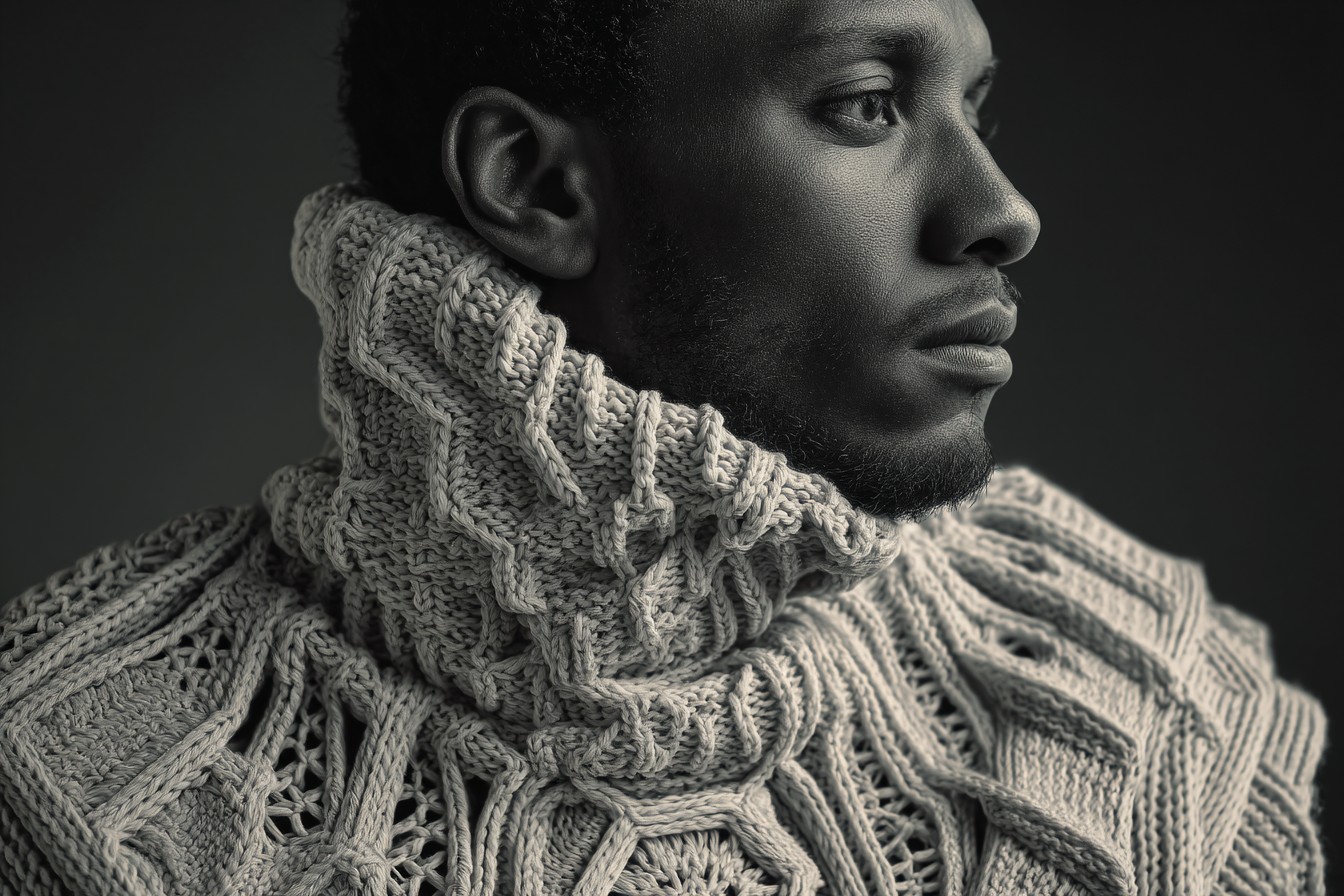
I rediscovered it three years later, during my first winter at university in Manchester. My student flat had the kind of heating system that seemed to operate on spite rather than thermodynamics—either Saharan heat that dried your eyeballs or, more commonly, a penetrating chill that had us all wearing coats indoors. Desperate times call for desperate measures. I pulled out that navy jumper, now slightly dusty but otherwise intact, and grudgingly put it on.
Christ, it was glorious. Like being hugged by a particularly affectionate cloud. I wore it constantly for the next two months, much to the amusement of my more fashion-conscious housemates. “Nice grandad jumper,” Vijay would snicker, before asking if he could borrow it when his parents came to visit. That jumper saw me through three brutal northern winters, countless essays written in unheated libraries, and at least two significant breakups (there’s something undeniably comforting about sobbing into quality lambswool).
Twenty-odd years later, I still have it. The cuffs are slightly frayed, there’s a tiny hole near one elbow that I’ve darned with embarrassing inexpertise, and it’s lost some of its original heft—but it’s still in rotation every winter. When I finally got around to checking the label properly, I discovered it was made in Scotland by a heritage brand that’s still producing virtually the same design today, only now charging about four times what my grandmother likely paid.
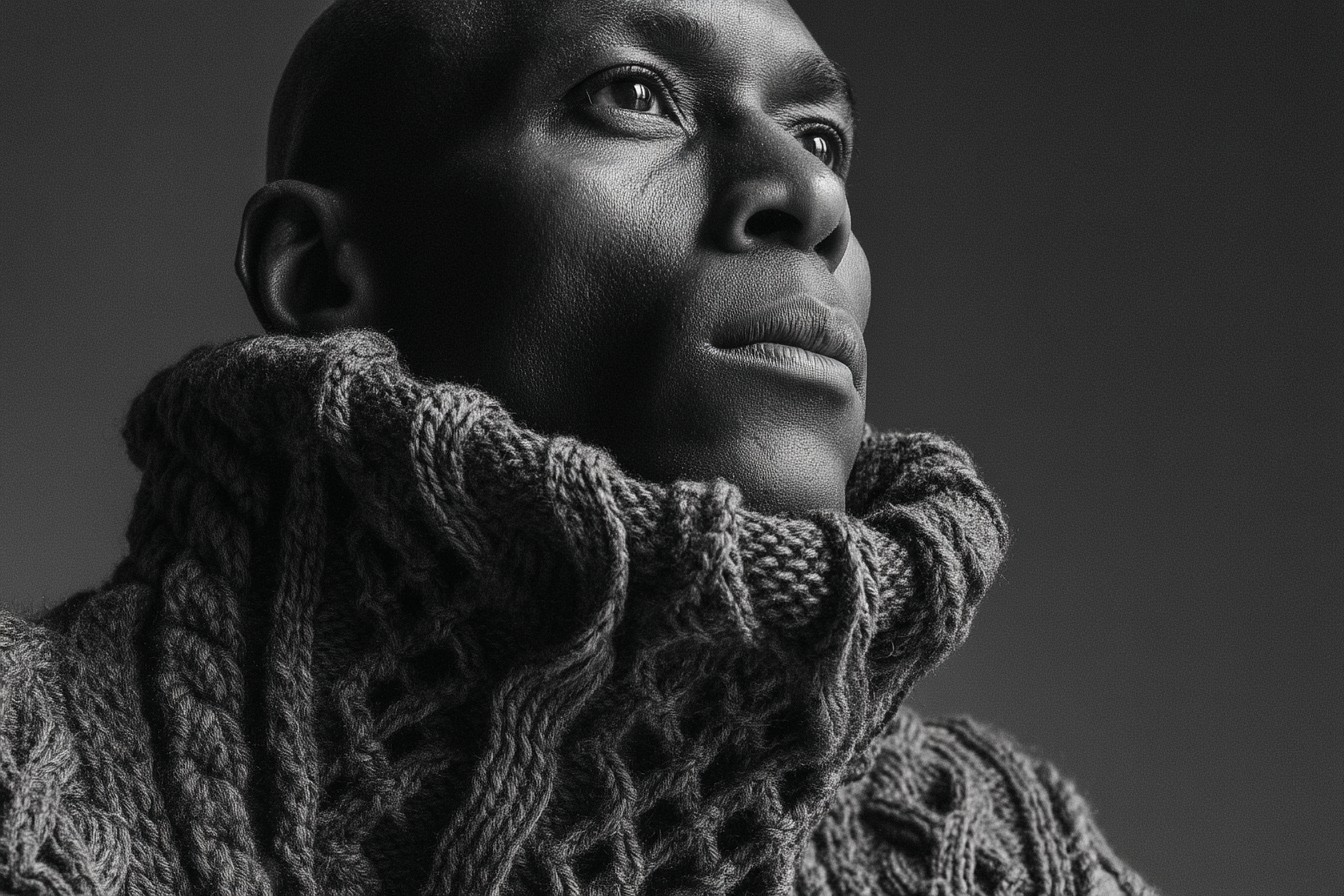
This isn’t just nostalgic rambling (well, not entirely). That jumper taught me something fundamental about clothing that’s served me well throughout my career: true quality often announces itself quietly, improves with age, and doesn’t always command the highest price tag. It’s a lesson particularly relevant when it comes to knitwear, where the relationship between price and quality can be maddeningly opaque.
I’ve since owned jumpers ranging from £30 high street purchases to eye-watering designer pieces that required serious budget recalibration (and once, memorably, eating nothing but beans on toast for a fortnight after an ill-advised splurge on a hand-knitted cashmere cable knit that I still maintain was worth every painful penny). I’ve made catastrophic errors—the acrylic blend that literally melted near a campfire, the supposedly luxury cashmere that pilled beyond recognition after two gentle wears, the trendy oversized mohair that shed so prolifically my flatmate accused me of secretly housing a fluorescent pink cat.
But I’ve also found genuine treasures at every price point. Which brings me to the heart of this somewhat rambling jumper manifesto: you absolutely can find excellent knitwear without remortgaging your flat, but you need to know what you’re looking for. Consider this your no-nonsense guide to the Great British Jumper—because in our climate, few garments will serve you better or longer than a properly chosen knit.
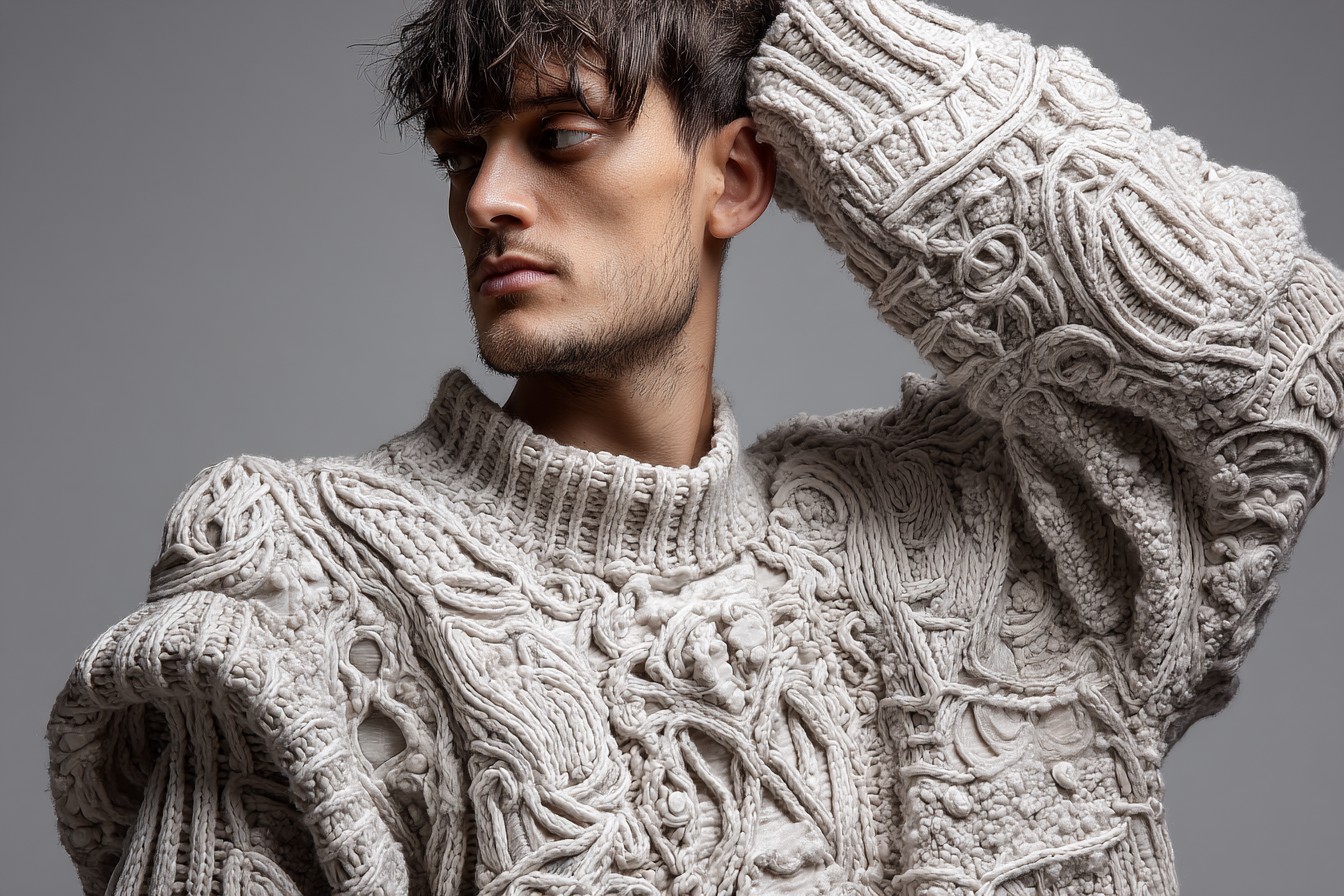
First, let’s talk materials, because this is where most jumper disasters begin. That suspiciously cheap cashmere on the high street? There’s usually a reason it’s suspiciously cheap. Cashmere quality varies wildly depending on the length and fineness of the fibers used. Shorter fibers might feel soft initially but will pill faster than a teenager’s first relationship. Budget cashmere often uses these shorter fibers, resulting in that devastating second-wear disappointment when your lovely new jumper suddenly develops those infuriating little bobbles all over.
This doesn’t mean you should automatically dismiss more affordable cashmere—just adjust your expectations and inspect carefully. Run your hand inside the jumper; better quality cashmere feels almost as soft on the inside as the outside. Check the weight too—lighter isn’t necessarily worse (some excellent summer cashmere is deliberately lightweight), but it should feel substantial for its weight class. If it already looks slightly fuzzy on the shelf, walk away—it’s only going to get worse with wear.
But here’s my most controversial knitwear opinion: for everyday British life, cashmere shouldn’t always be your first choice anyway. Heresy, I know. While I treasure my few good cashmere pieces, the true workhorses of my jumper collection are made from more robust materials. Lambswool deserves particular recognition—warm, reasonably soft (especially when blended with a touch of nylon for strength), and significantly more durable than cashmere at a fraction of the price.
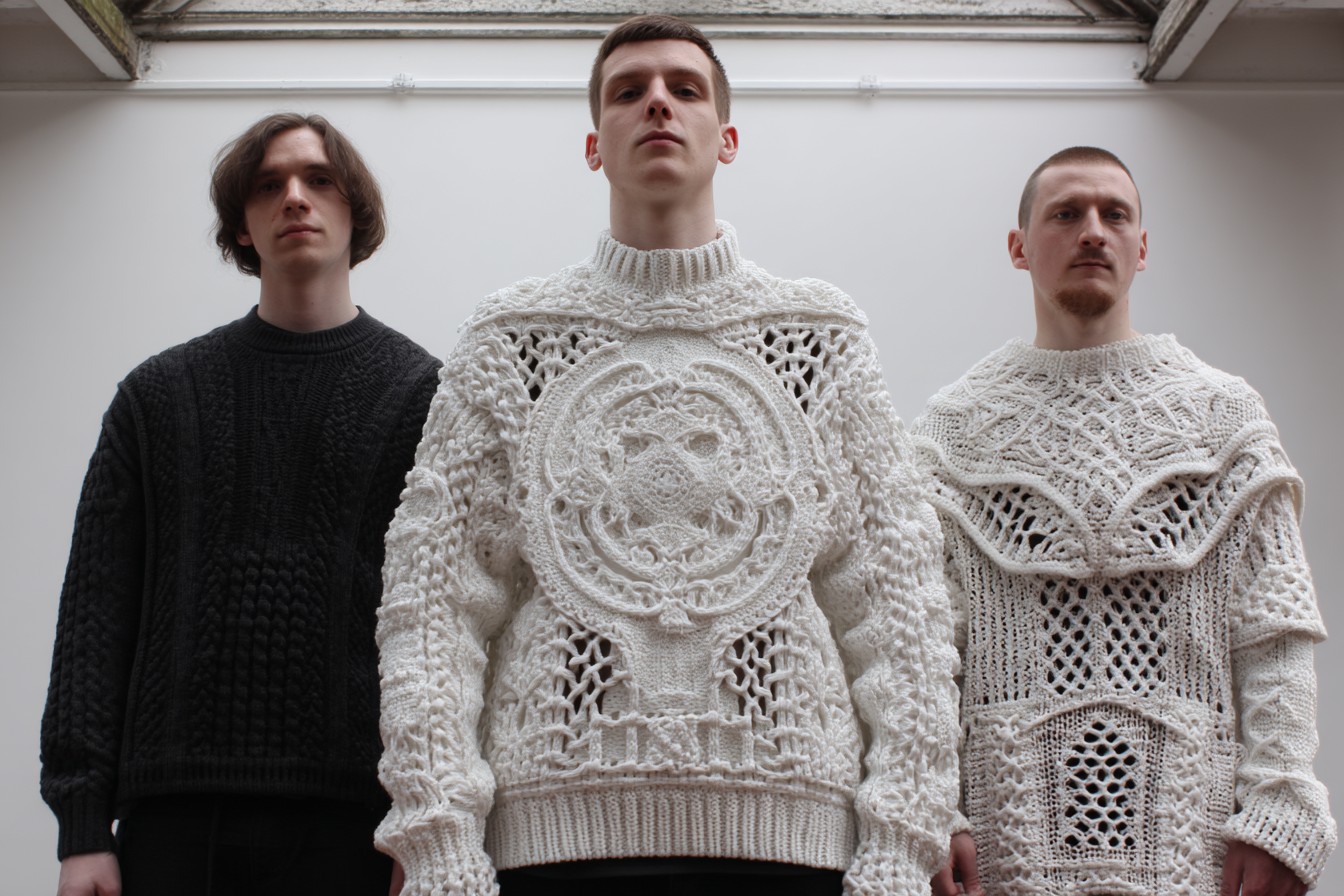
Merino occupies the sweet spot between luxury and practicality—softer than regular wool, less prone to pilling than cashmere, and versatile enough for year-round wear. A good merino jumper will serve you from autumn through spring, and even on cooler summer evenings. It also takes dye beautifully, offering richer colors than many other fibers.
For pure value-to-quality ratio, it’s hard to beat Shetland wool. Yes, the traditional stuff can be rougher than a pub carpet (though modern versions are often softer), but it’s nearly indestructible. I have a Shetland jumper that’s survived fifteen years of regular wear and still looks essentially new. It’s the Land Rover Defender of knitwear—not the most refined, but you’ll be passing it down to your grandchildren.
Then there’s the dark horse of affordable quality: the lambswool/nylon blend. Purists will scoff, but a small percentage of nylon (around 10-15%) can significantly improve durability without compromising warmth or comfort. Some of my most reliable jumpers use this blend, and they’ve outlasted purer but more fragile alternatives.

Now, where to find these woolen wonders without devastating your bank account? I’m going to commit what some might consider style journalism sacrilege and direct you straight to Marks & Spencer’s lambswool range. Stop rolling your eyes—their basic crew necks and v-necks hover around the £30-40 mark and deliver astonishing quality for the price. Yes, the styling is conservative, but a plain navy or charcoal crew neck jumper will never not be useful. I’ve sent fashion snobs into existential crises by revealing that the “vintage find” they’ve just complimented is actually M&S.
Uniqlo deserves mention for their merino offerings, which provide remarkable value, particularly in their extra fine range. The fit is more contemporary than M&S, and while they won’t last decades, three or four years of regular wear from a £30-40 jumper represents solid value.
For those with slightly more budget, John Lewis’s own-brand cashmere hits a sweet spot around the £100 mark. It’s not heirloom quality, but with proper care, it’ll serve you well for several years. Their lambswool options hover around £40-50 and offer excellent durability.
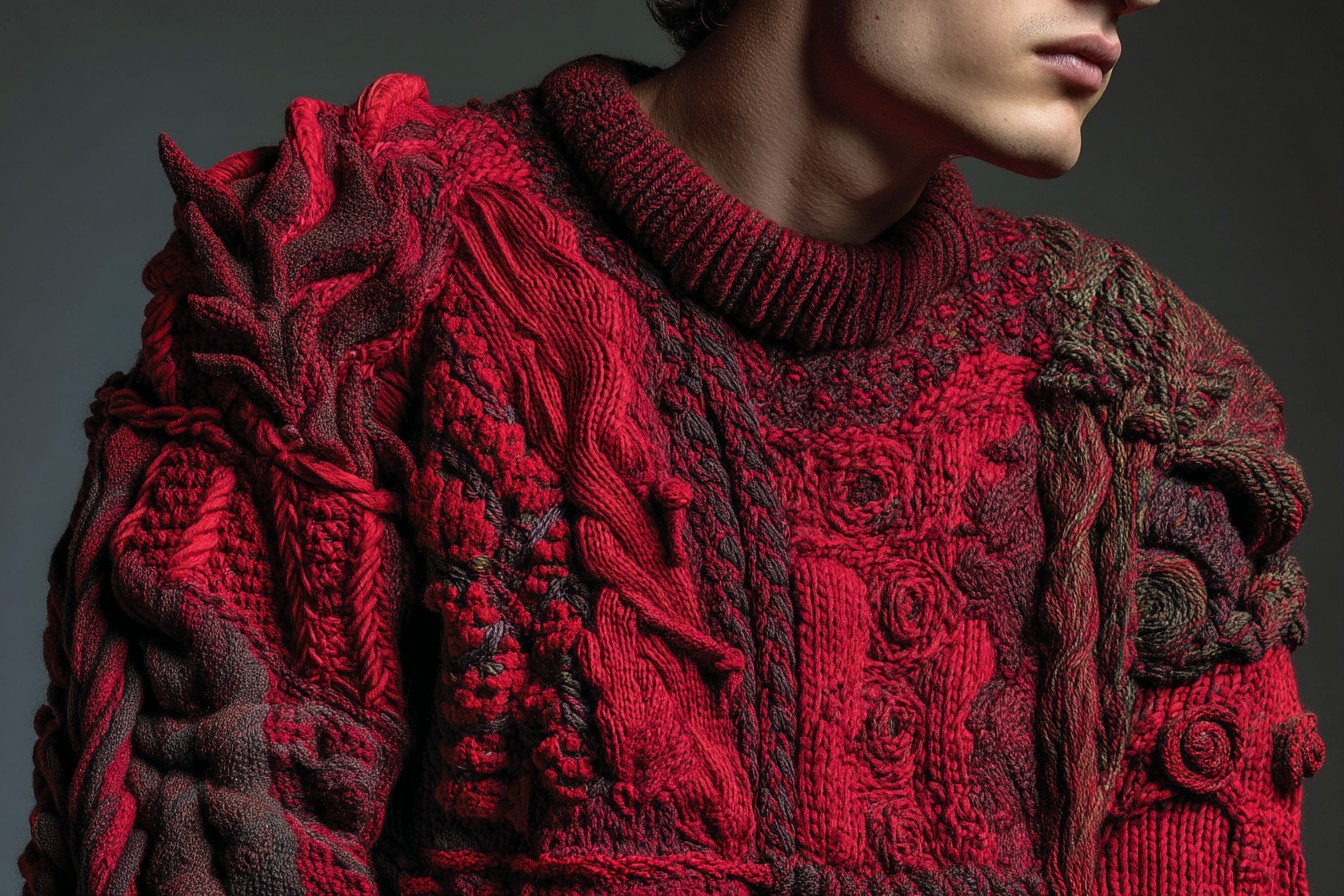
If you can stretch to £60-80, Community Clothing deserves your attention. Founded by Patrick Grant (of E. Tautz and Great British Sewing Bee fame), they produce no-nonsense, well-made basics in Northern factories that once supplied much pricier brands. Their geelong lambswool jumpers are genuinely comparable to pieces costing twice as much.
For those willing to invest a bit more for significant quality improvement, Finisterre’s £95 geelong wool jumpers offer remarkable value. Founded as a surfwear company, they understand creating garments that stand up to proper weather. Their commitment to sustainability is genuine rather than greenwashing, and the quality-to-price ratio is outstanding.
At the £100-150 range, you start entering heritage territory. Brands like Harley of Scotland, William Lockie, and Johnston’s of Elgin (on sale or outlet) produce jumpers that genuinely will last decades with proper care. Their standard models haven’t changed much in generations because they haven’t needed to—they nailed the formula long ago.
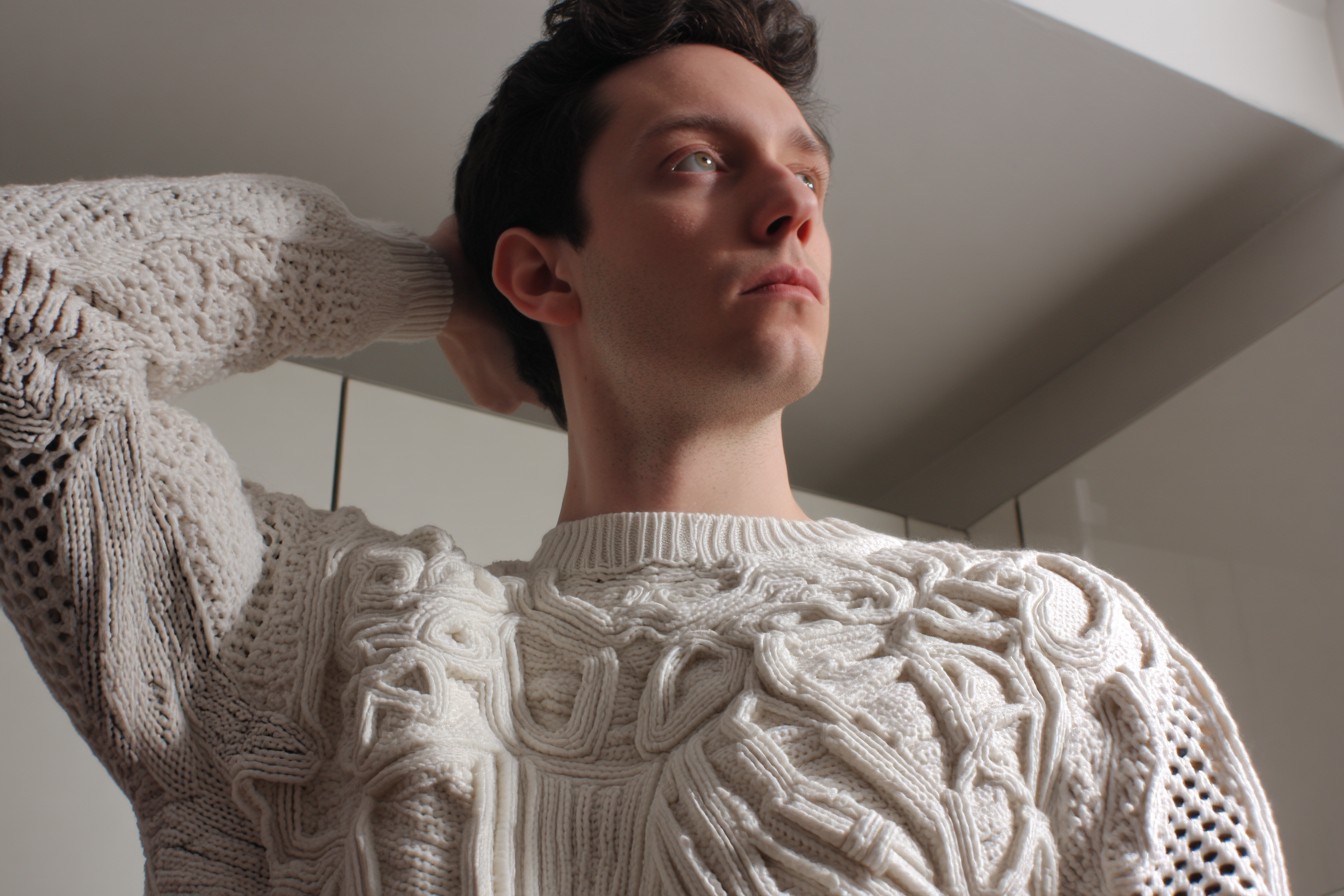
The secondhand market offers perhaps the best value of all. Quality knitwear from heritage brands frequently turns up in charity shops, particularly in affluent areas where people are more likely to donate rather than resell. I’ve found Scottish cashmere for under £20 and barely-worn merino for less than a tenner. Online, eBay remains a treasure trove if you know which brands to search for.
A note on vintage knitwear: older jumpers were often made to significantly sturdier standards than their modern equivalents. That slightly austere 100% wool jumper from the 1980s might not have the buttery softness of modern luxury knitwear, but it will likely outlive anything produced today. Just be prepared to deal with slightly more traditional fits—nothing a good tailor can’t address if necessary.
Regardless of budget, certain universal rules apply when evaluating knitwear quality. Check the seams—they should be flat and neat, with no obvious bulging or puckering. Examine the ribbing at cuffs and hem, which should be tight and springy. For cashmere, check for pilling by gently rubbing the surface with your palm—quality pieces won’t immediately fluff up. Weight often correlates with quality—a heavier jumper generally contains more fiber, though this varies by design and material.

The care you give your jumpers matters almost as much as initial quality. I dedicated an entire weekend last year to teaching my godson proper knitwear maintenance after finding him tumble-drying a cashmere jumper I’d given him (a moment that aged me ten years instantly). Hand washing is ideal but realistically impractical for many. A mesh bag and gentle wool cycle set to cold will serve most jumpers well enough. Always dry flat on a towel—hanging wet knitwear is a crime against both nature and your future self, who will wonder why your jumper now has orangutan arms. Invest in a decent fabric shaver for dealing with inevitable pilling, and for god’s sake, give your knitwear a day’s rest between wears to recover its shape.
Storage might seem trivial, but it’s crucial for longevity. Fold, don’t hang, to avoid shoulder stretching. Cedar blocks or lavender sachets will deter moths, those airborne terrorists that have reduced more than one of my precious knits to lace doilies. I learned this lesson the hard way after finding an entire colony of the little bastards had turned my favorite camel hair cardigan into their all-inclusive resort.
As for style—well, that’s more subjective, but if you’re looking to maximize versatility and longevity, certain jumper types have proven their staying power. The crew neck in navy, grey, or camel will never let you down. It works under a blazer, over a t-shirt, with jeans, with trousers, for work, for weekends, for essentially everything short of black-tie events (though I did once see a well-known artist pair a pristine black cashmere crew neck with his dinner suit, and frankly, he looked better than most of the traditionally attired guests).
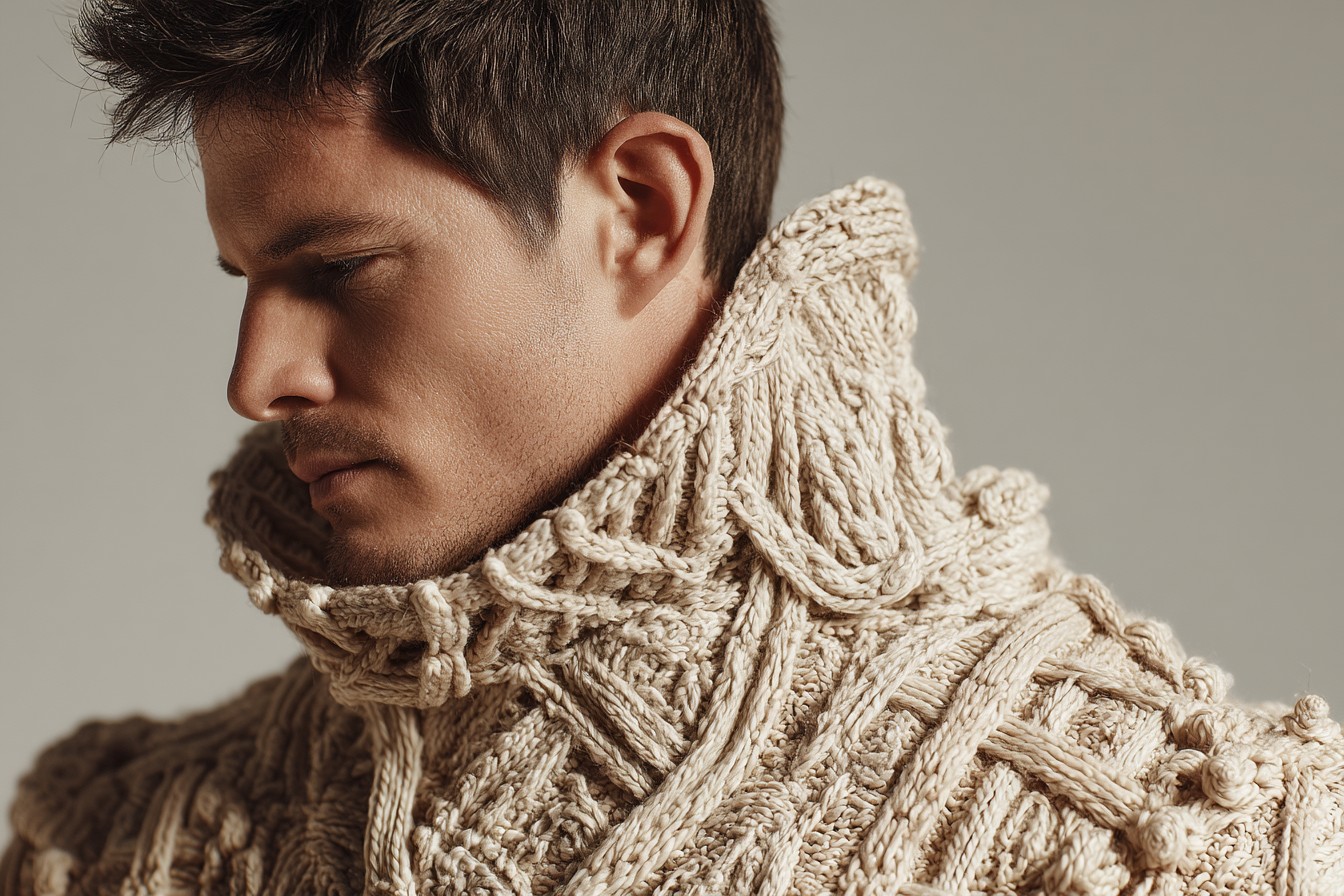
The v-neck has suffered somewhat from unfortunate associations with Simon Cowell’s chest-plunging examples, but a properly proportioned one that hits just at or slightly below the collarbone remains an elegant option, particularly for wearing with ties or under blazers.
The roll-neck (or turtleneck, if you prefer) continues its renaissance, having shed the pretentious intellectual or 1970s associations that once limited its appeal. A black merino roll-neck under a suit remains one of the sharpest, most timeless looks a man can wear.
The cardigan deserves special mention for its versatility. Whether chunky and casual or fine gauge and elegant, it functions as both jumper and light jacket. The button front makes it adaptable to temperature fluctuations, and it layers more easily than pullovers. My oldest surviving piece of knitwear is actually a navy cardigan inherited from my grandfather—approaching seventy years old and still worn regularly.
Cable knits offer texture and visual interest without resorting to potentially regrettable patterns or colors. A cream cable knit jumper is practically a British heritage uniform, though be warned that the chunkier versions can add visual bulk—not always ideal if you’re already solidly built (a lesson I learned after an unfortunate Christmas photo where I appeared to have doubled in width).
While I’ve focused on classic styles, I’m not suggesting your jumper collection should be entirely conservative. Some of my most treasured knits feature distinctive patterns or unusual colors. The key is considering their staying power—both physically and stylistically. That lime green mohair might seem irresistible today, but ask yourself if you’ll still reach for it in five years.
Perhaps the most important quality metric is simply this: does wearing it make you happy? My grandmother’s navy lambswool jumper wasn’t revolutionary in design or made from rare Himalayan mountain goat fur, but it’s given me more comfort and joy than far more expensive pieces. There’s something deeply satisfying about a garment that improves with age and carries memories within its fibers.
So before you spend three figures on cashmere of questionable provenance, consider whether a well-chosen £40 lambswool might actually serve you better. The Great British Jumper isn’t about flashy logos or stratospheric price tags—it’s about finding pieces that quietly, competently keep you warm year after year, gradually conforming to your body and life until they feel less like garments and more like old friends.
My grandmother was right after all—every man does need a decent jumper. Preferably several. Just don’t wait until you’re shivering in an underheated student flat to appreciate them.
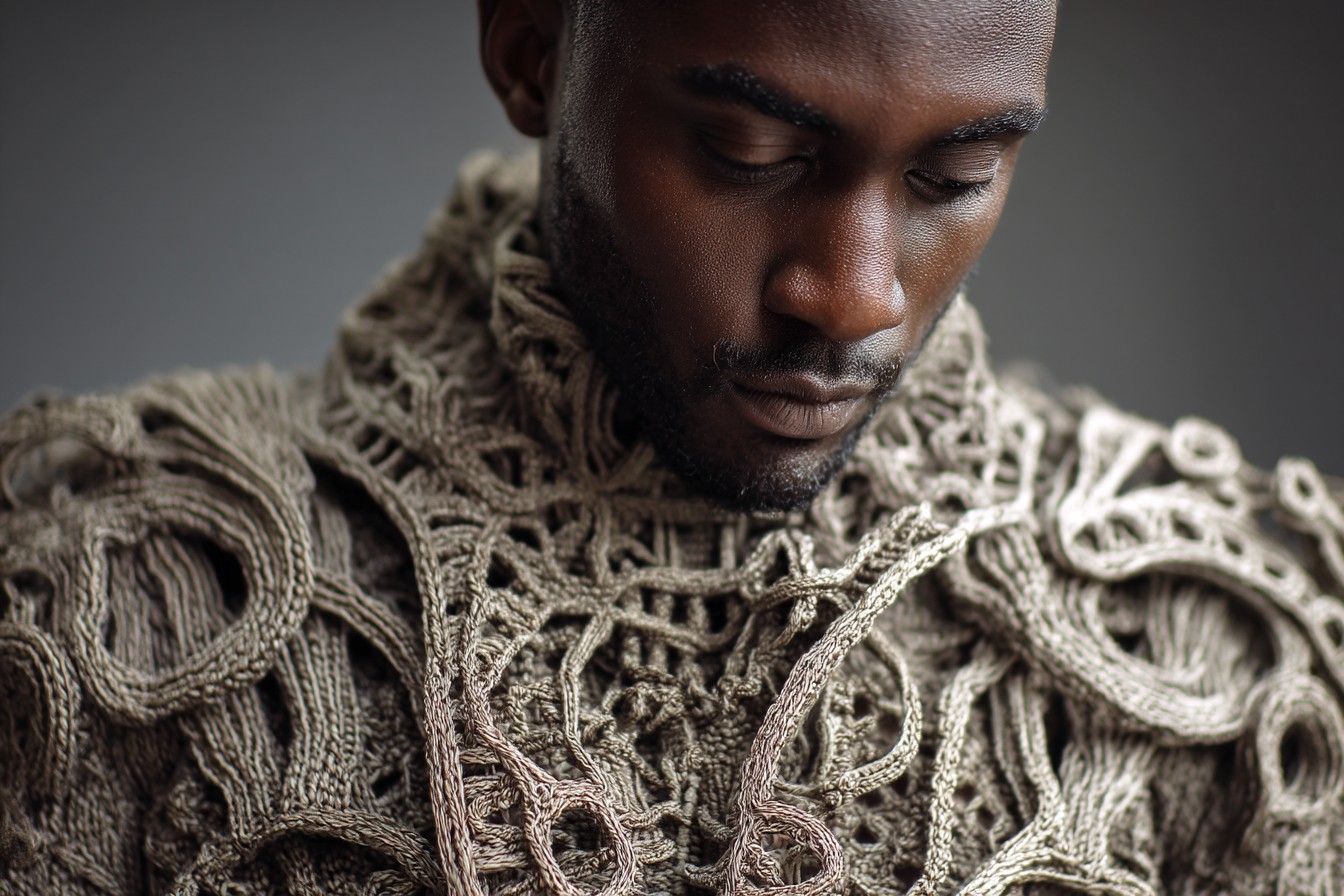
Leave a Reply